Sure! Here’s your blog with H2 headings for each jade plant variety, clear descriptions in simple and engaging language, and a pleasant introduction and conclusion.
20 Best Jade Plants for Indoors: A Guide to Beautiful Succulents
Jade plants are tough, beautiful succulents that make fantastic houseplants. They symbolize luck and prosperity, and many people grow them for their easy care and long lifespan. While the classic Crassula ovata is the most well-known, there are many other varieties that are perfect for indoor growing.
In this guide, you’ll discover 20 stunning types of jade plants, each with unique colors, shapes, and textures. Whether you prefer a compact variety for small spaces or a trailing type for hanging pots, there’s a jade plant for you.
Contents
- 1 Crassula ovata (Classic Jade Plant)
- 2 Crassula ovata ‘Gollum’
- 3 Crassula ovata ‘Hobbit’
- 4 Crassula ovata ‘Minima’
- 5 Crassula arborescens (Silver Dollar Jade)
- 6 Crassula ovata ‘Hummel’s Sunset’
- 7 Crassula ovata ‘Crosby’s Compact’
- 8 Crassula ovata ‘Botany Bay’
- 9 Crassula ovata ‘Pink Beauty’
- 10 Crassula arborescens undulatifolia (Ripple Jade)
- 11 Crassula capitella ‘Campfire’
- 12 Crassula perforata (String of Buttons)
- 13 Crassula sarmentosa (Trailing Jade)
- 14 Crassula tetragona (Miniature Pine Tree)
- 15 Crassula rupestris var. marnieriana (Baby Necklace Jade)
- 16 Crassula rupestris var. monticola (Rosary Vine)
- 17 Crassula multicava (Fairy Crassula)
- 18 Crassula falcata (Propeller Plant)
- 19 Crassula ovata ‘Skinny Fingers’
- 20 Crassula ovata ‘Red Coral’
Crassula ovata (Classic Jade Plant)
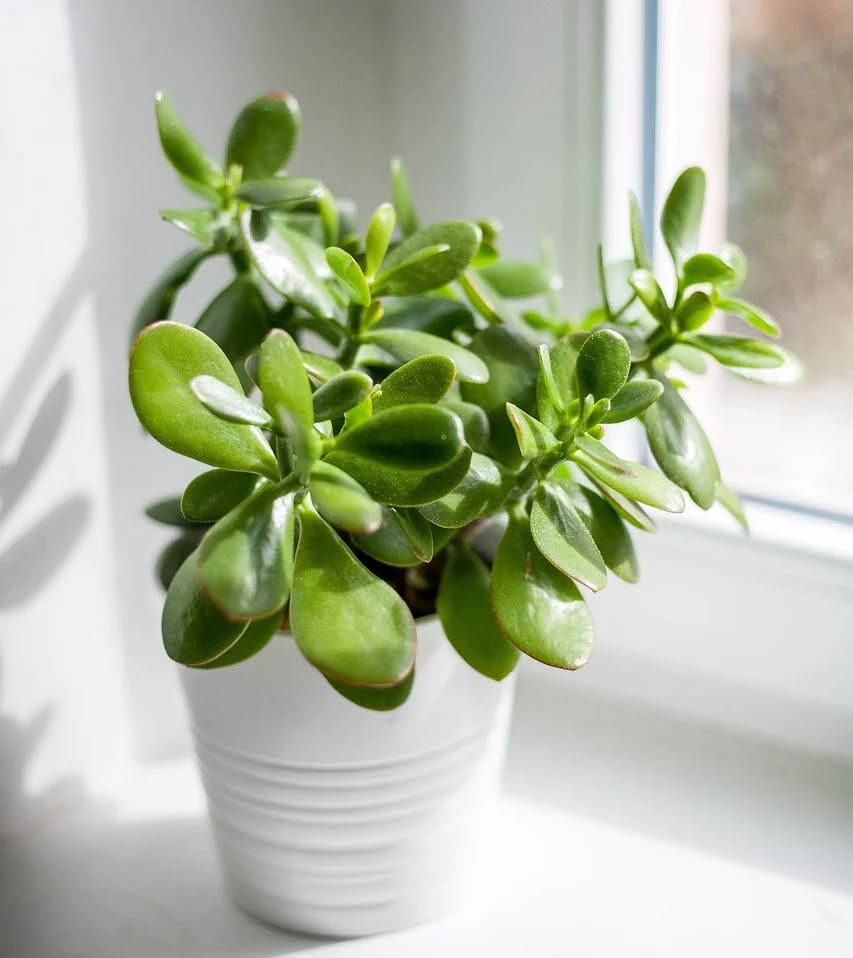
This is the most common jade plant. It has thick, round, glossy green leaves that turn red along the edges when exposed to bright light. Its tree-like growth makes it look like a tiny, indoor bonsai, and it can live for decades with proper care.
Crassula ovata ‘Gollum’
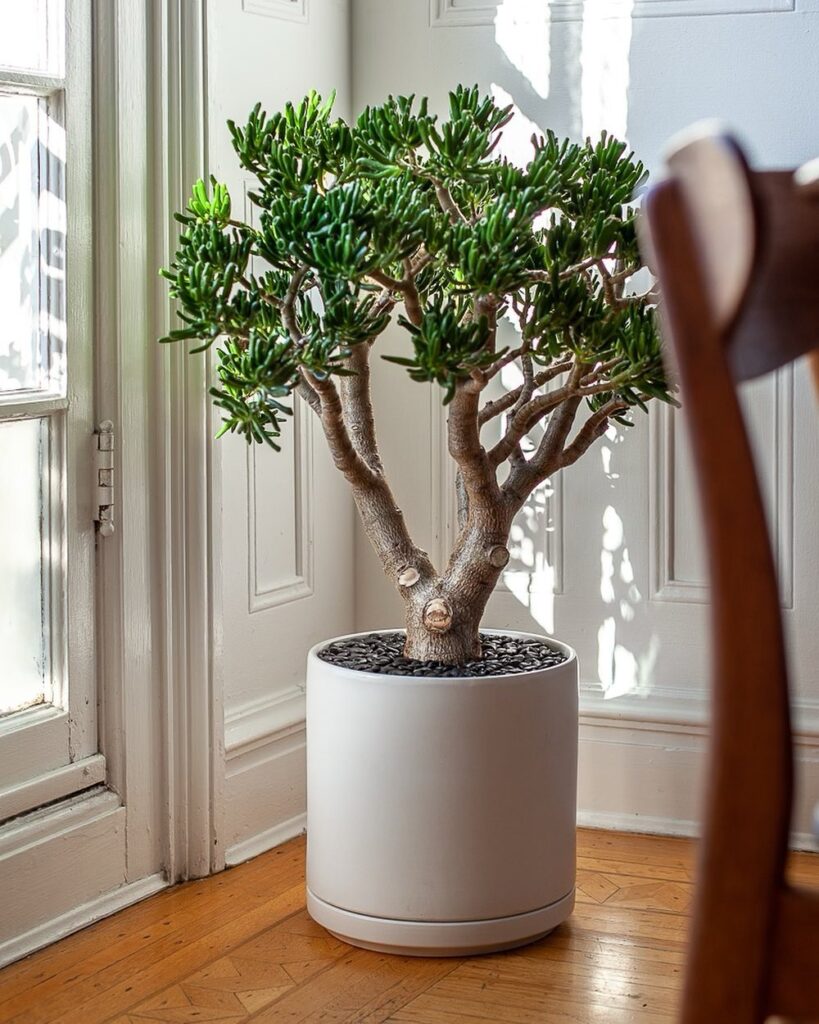
This variety has tube-shaped leaves that curl inward, creating a fun, coral-like appearance. The leaves are a rich green with reddish tips, making it a great plant for adding color to your home.
Crassula ovata ‘Hobbit’
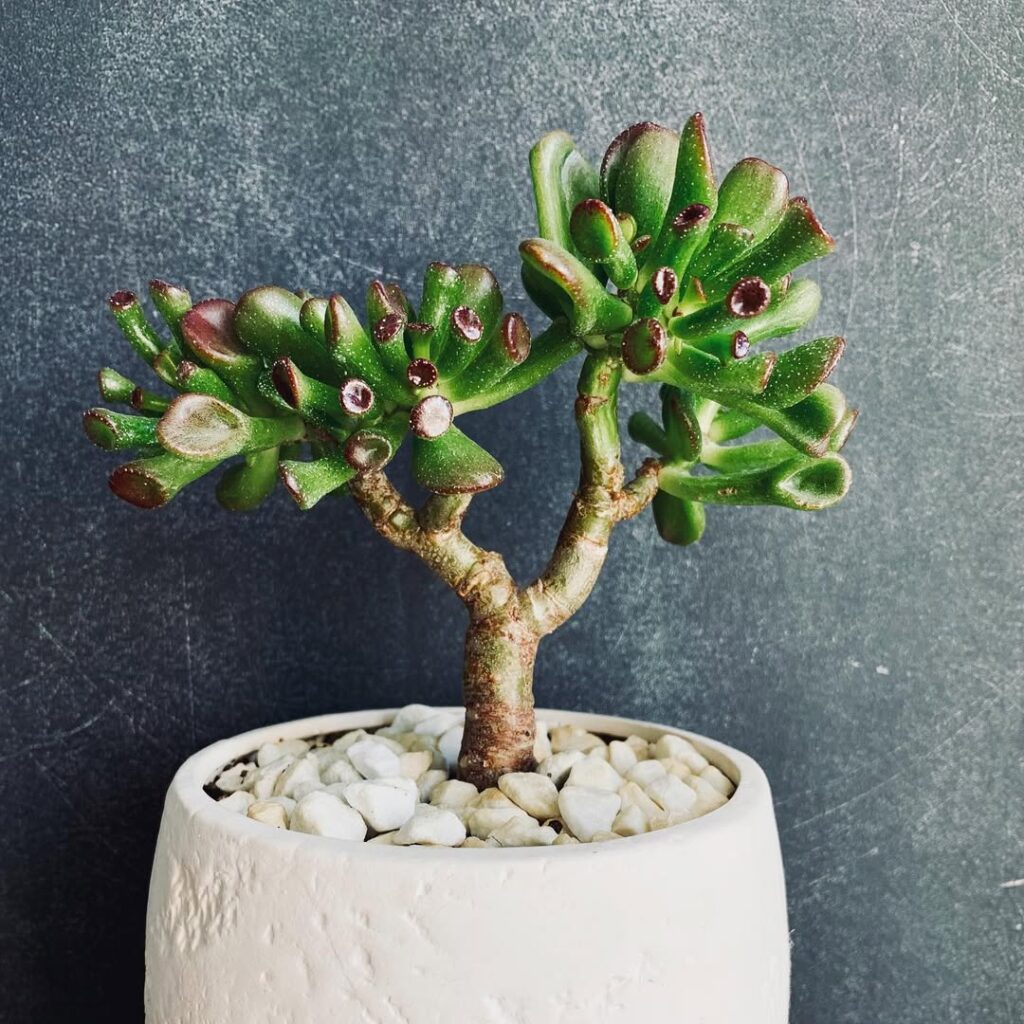
Similar to ‘Gollum,’ but its leaves are shorter and more curled. It grows into a dense, bushy plant, making it great for small spaces or bonsai-style shaping.
Crassula ovata ‘Minima’
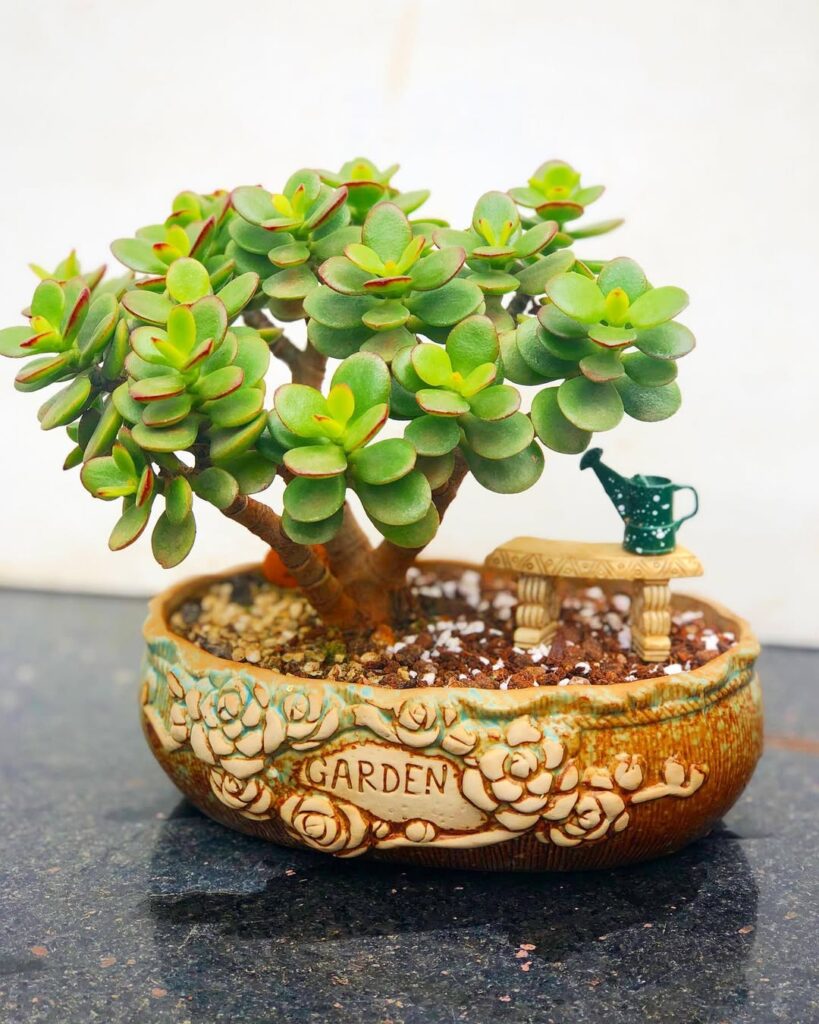
This dwarf jade plant has tiny, clustered leaves and stays much smaller than other varieties. It is perfect for desks, shelves, and compact spaces, growing up to 12 inches tall.
Crassula arborescens (Silver Dollar Jade)
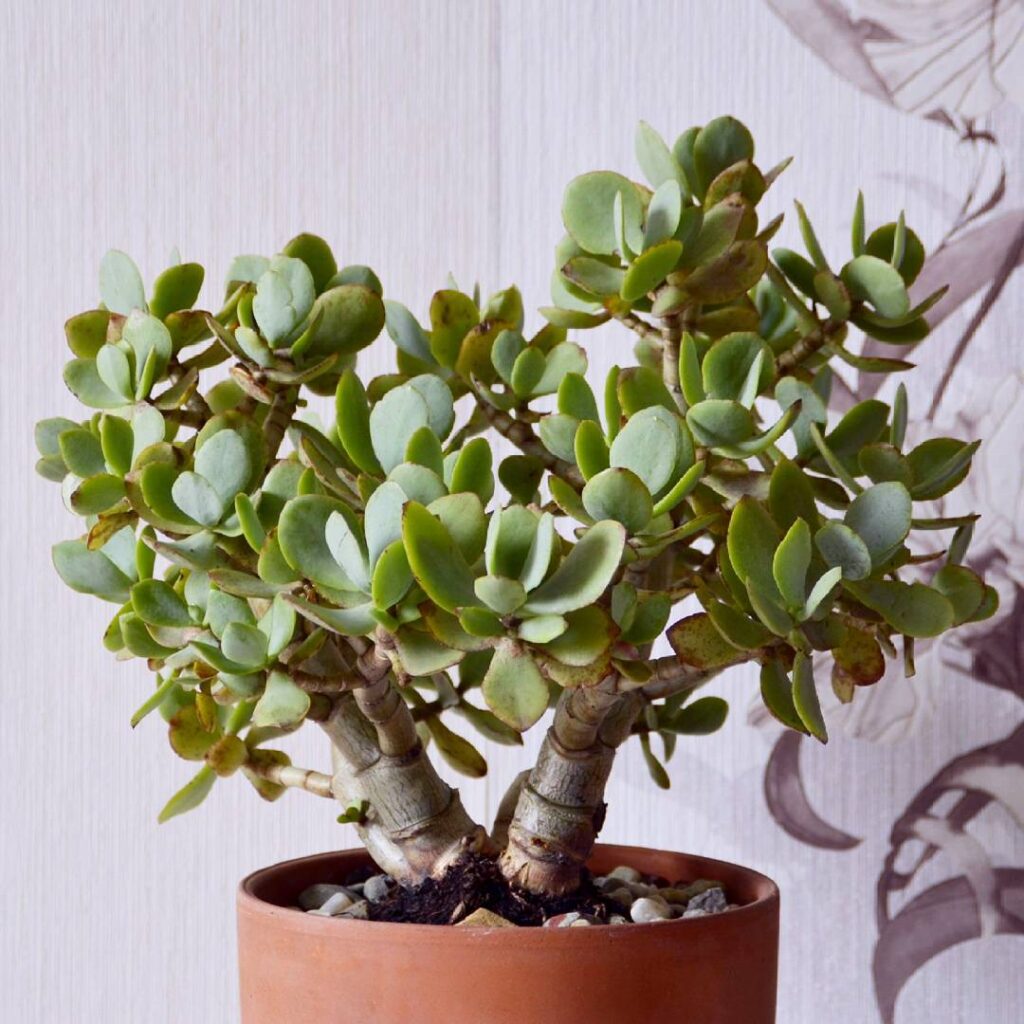
This striking jade plant has silvery-blue, rounded leaves with reddish edges, giving it a cool-toned look. Its slightly thicker leaves give it a sturdy appearance, and it pairs beautifully with other succulents.
Crassula ovata ‘Hummel’s Sunset’
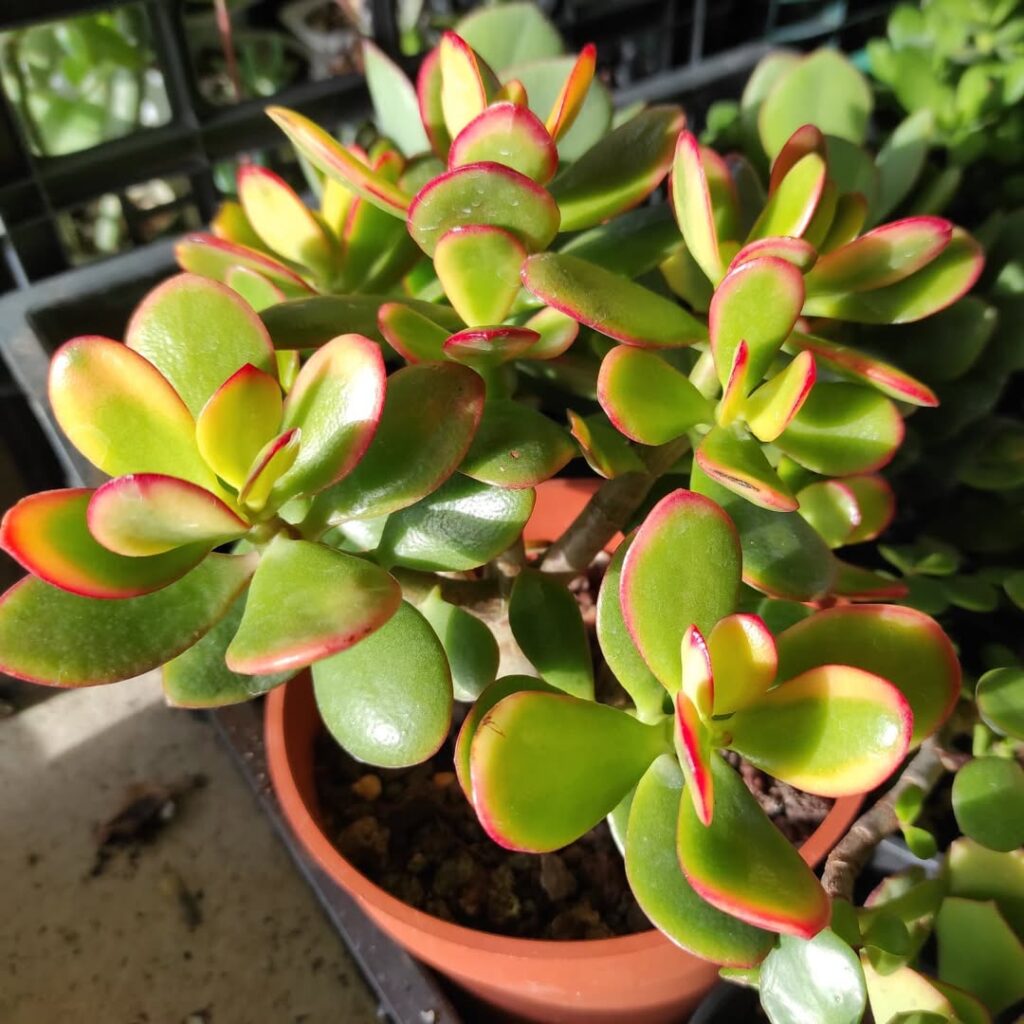
One of the most colorful jade plants, ‘Hummel’s Sunset’ has golden-yellow leaves that turn orange and red in bright light. It adds warmth to any indoor plant collection.
Crassula ovata ‘Crosby’s Compact’
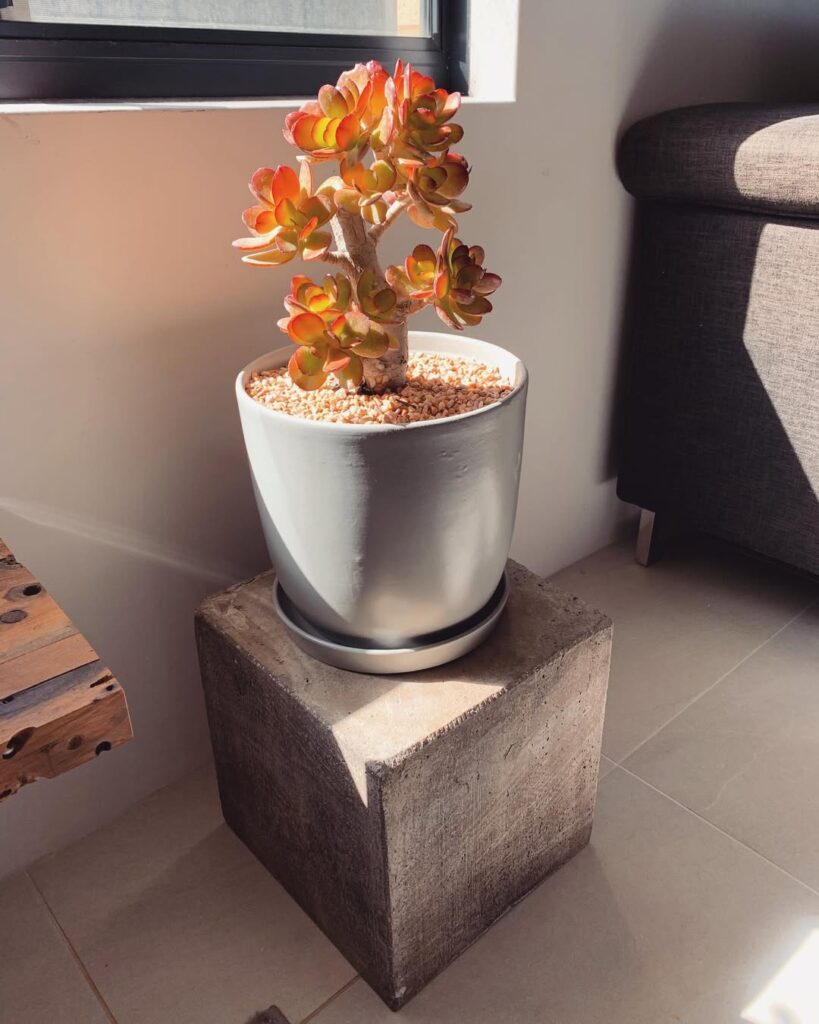
A miniature version of the classic jade plant, it grows in a compact, bushy form with dense foliage. Its small size makes it ideal for windowsills and tabletops.
Crassula ovata ‘Botany Bay’
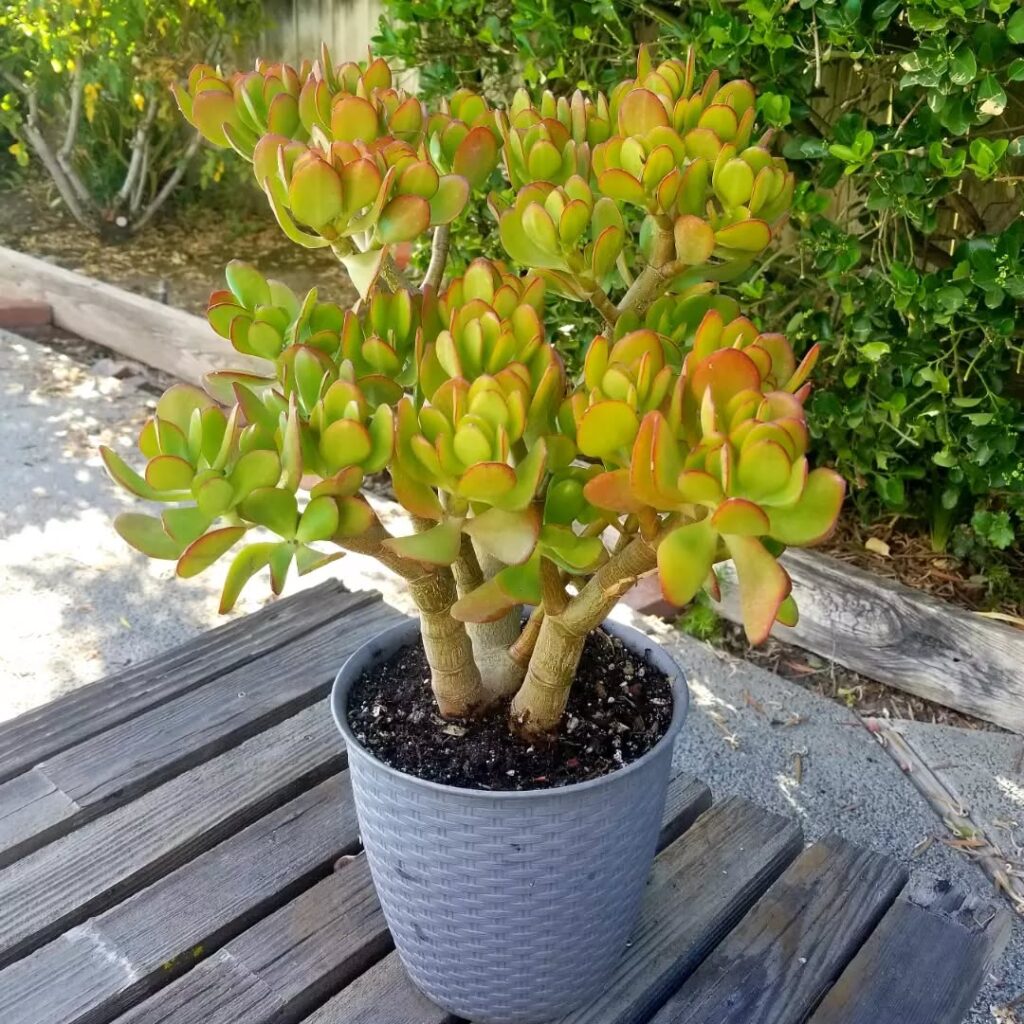
This jade variety has a strong upright growth habit, with light green leaves. It creates a bold, structured look, making it a great focal plant in indoor gardens.
Crassula ovata ‘Pink Beauty’
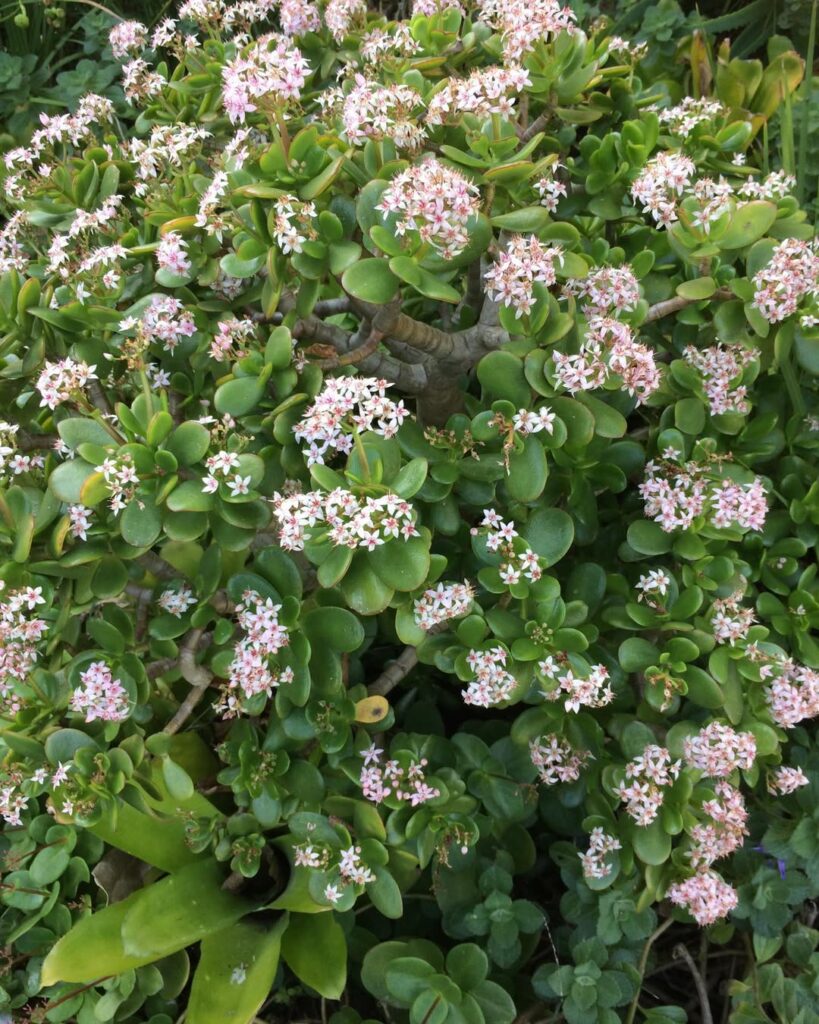
Unlike most jade plants, ‘Pink Beauty’ produces soft pink flowers instead of white. It has green leaves with reddish edges and blooms beautifully when given bright light.
Crassula arborescens undulatifolia (Ripple Jade)
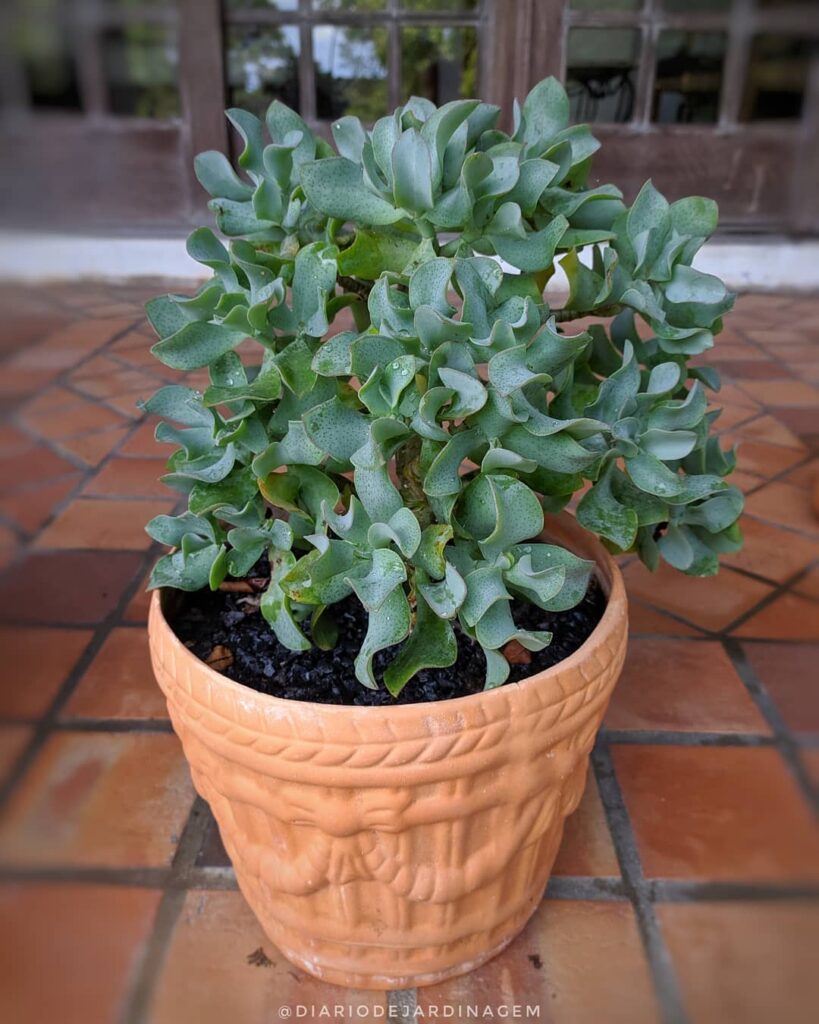
This variety has wavy-edged leaves that make it look a little different from the usual smooth jade plants. Its deep green color and curvy leaf edges add texture and movement to your collection.
Crassula capitella ‘Campfire’
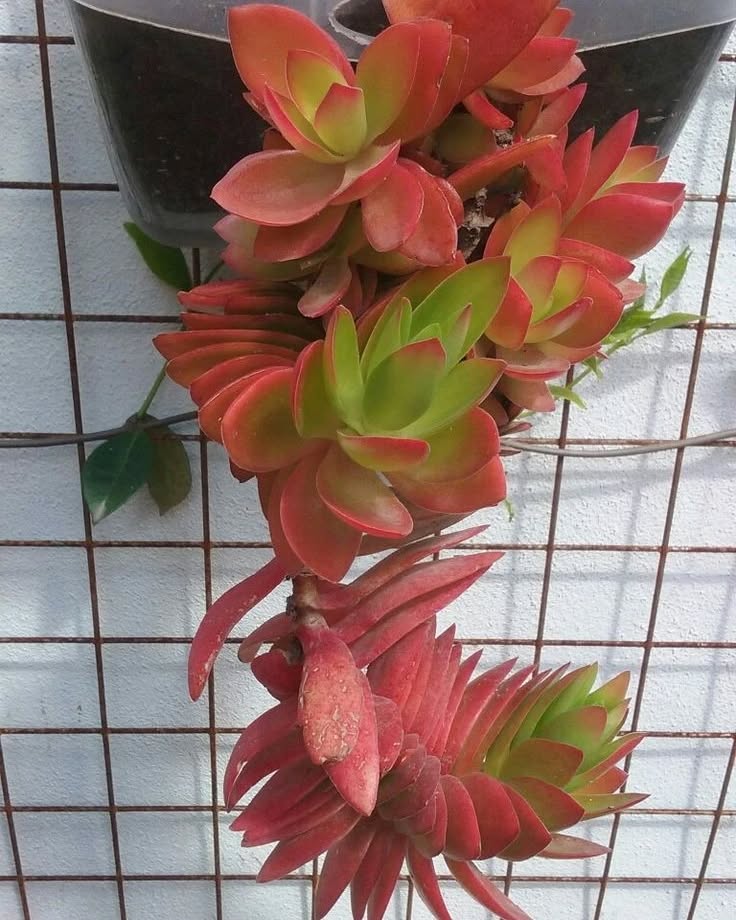
‘Campfire’ jade has bright red-orange leaves that look like flickering flames. When grown in bright sunlight, the leaves turn fiery red, making it one of the most colorful jade plants.
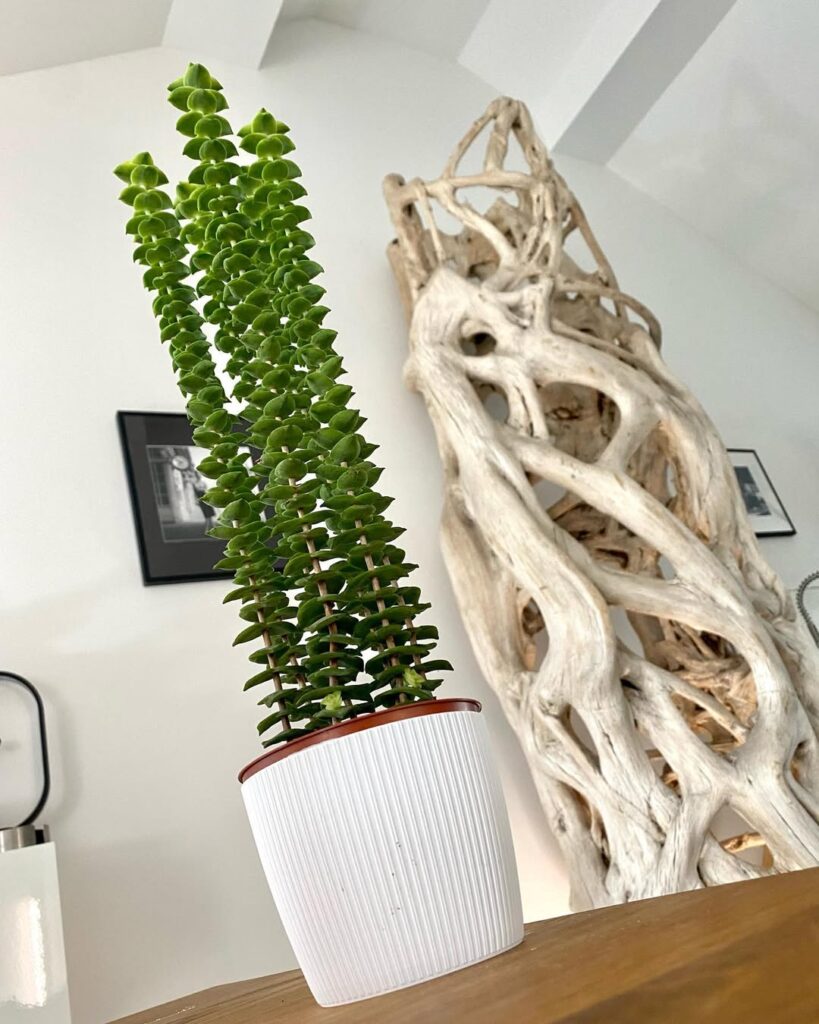
A stacked-leaf jade plant, it grows small, round leaves in a spiral pattern along its stems. Its green leaves with red edges create a fun, geometric look.
Crassula sarmentosa (Trailing Jade)
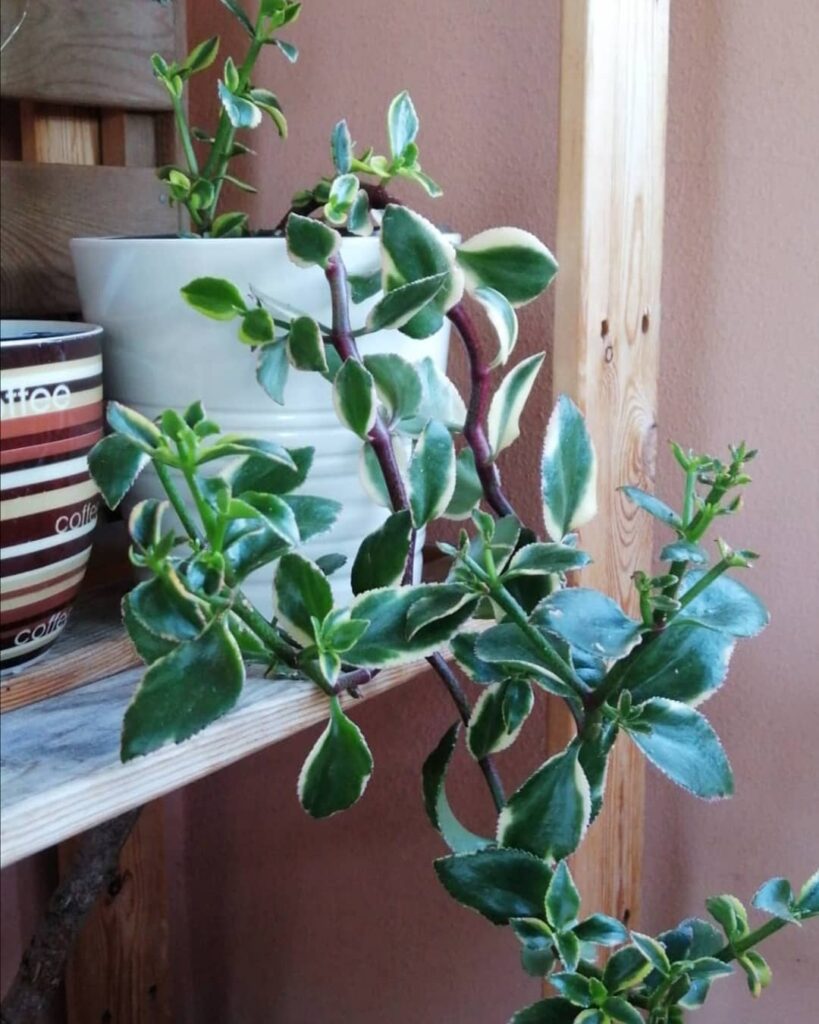
A vining jade plant, perfect for hanging baskets or cascading over shelves. Its small, bright green leaves spill over the edges of pots, creating an elegant trailing effect.
Crassula tetragona (Miniature Pine Tree)
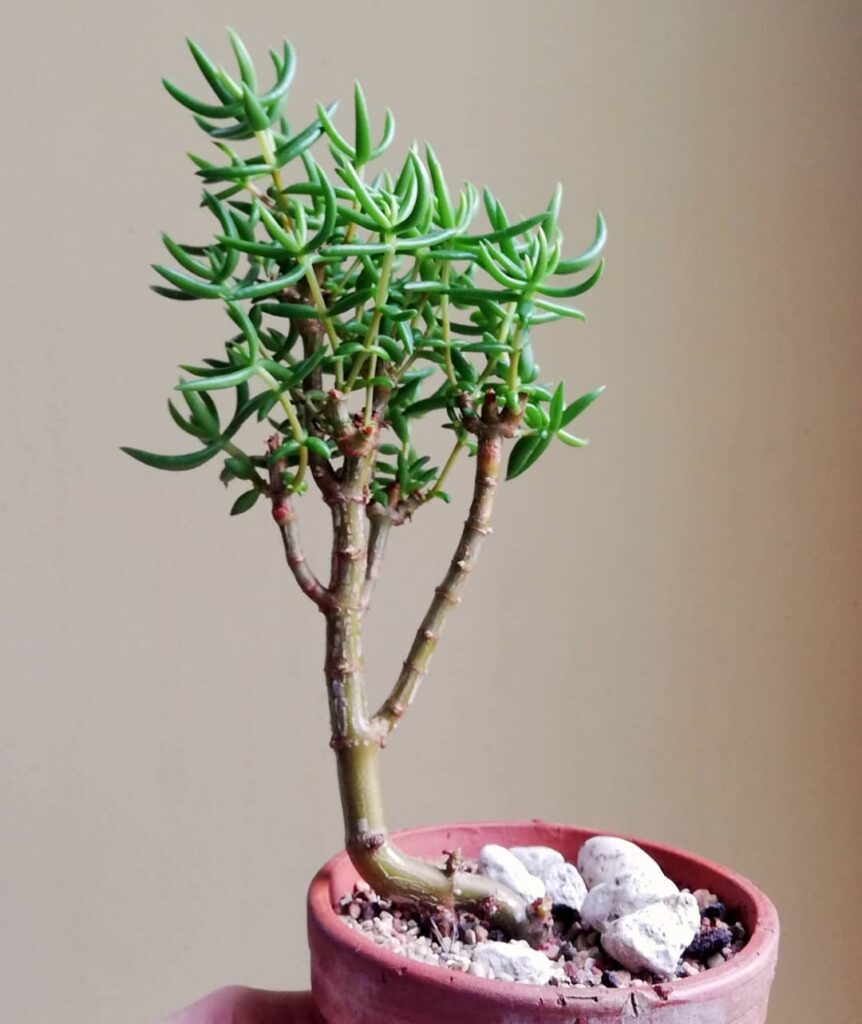
This jade plant looks just like a tiny pine tree, with thin, needle-like leaves. Its upright growth makes it a great addition to modern indoor gardens.
Crassula rupestris var. marnieriana (Baby Necklace Jade)
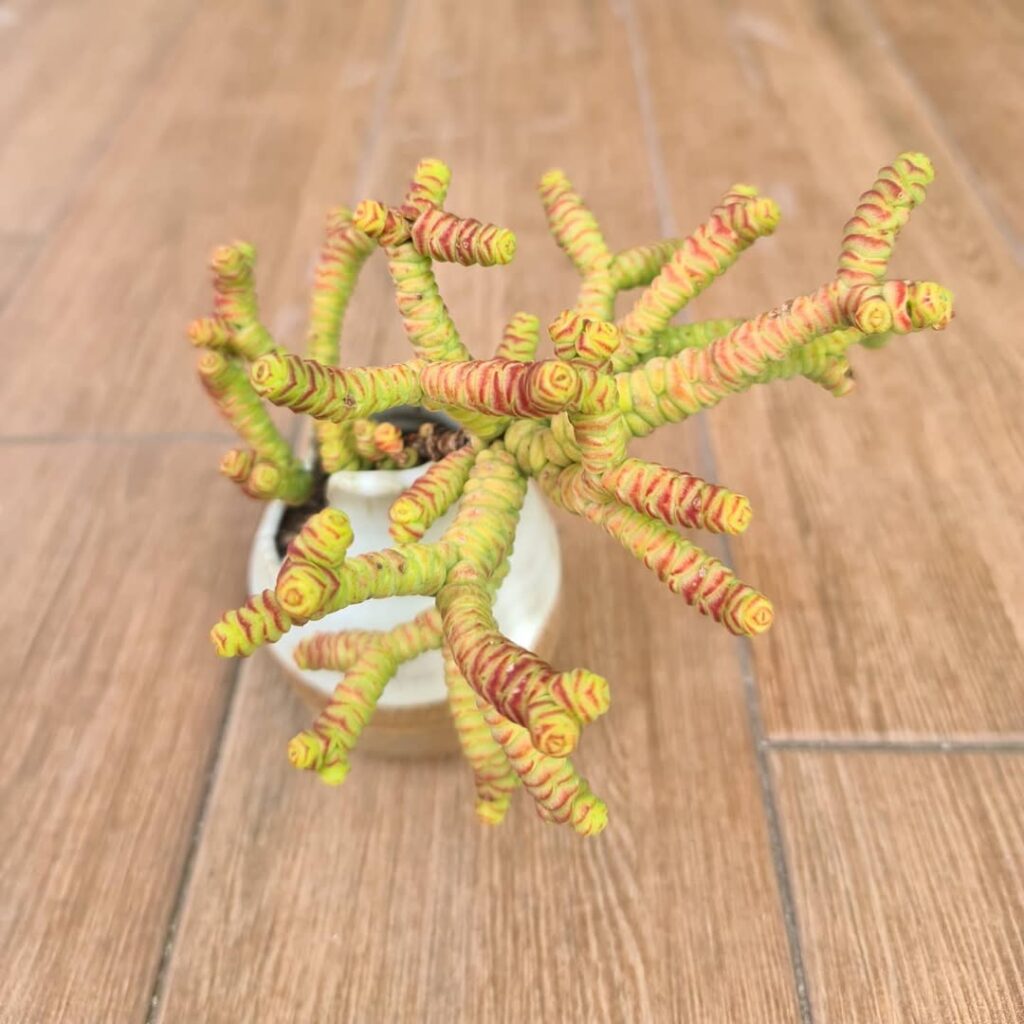
This variety has small, rounded leaves stacked along its stems, making it look like a string of beads. The compact growth makes it perfect for small pots and terrariums.
Crassula rupestris var. monticola (Rosary Vine)
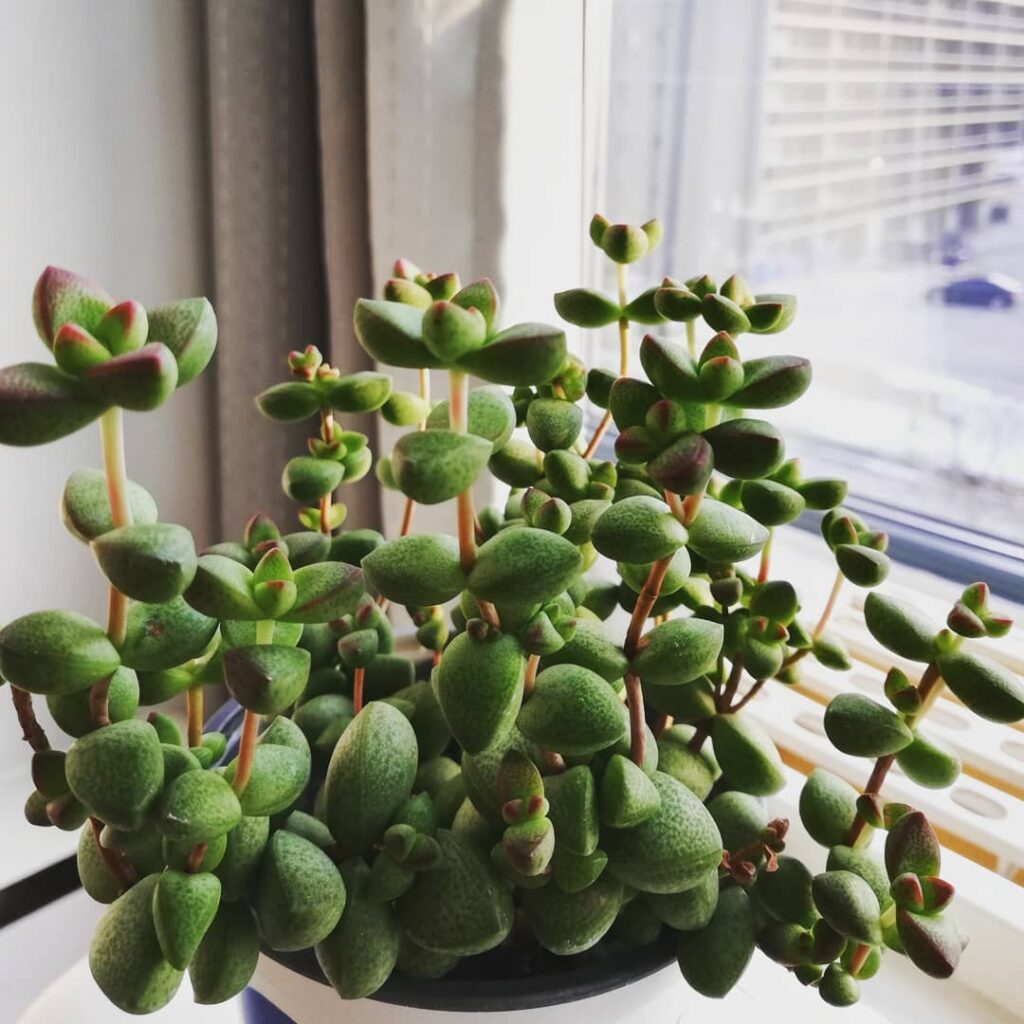
Similar to Baby Necklace Jade, this plant has tiny, bead-like leaves that trail beautifully over the sides of pots. It thrives in bright light and is perfect for small indoor spaces.
Crassula multicava (Fairy Crassula)
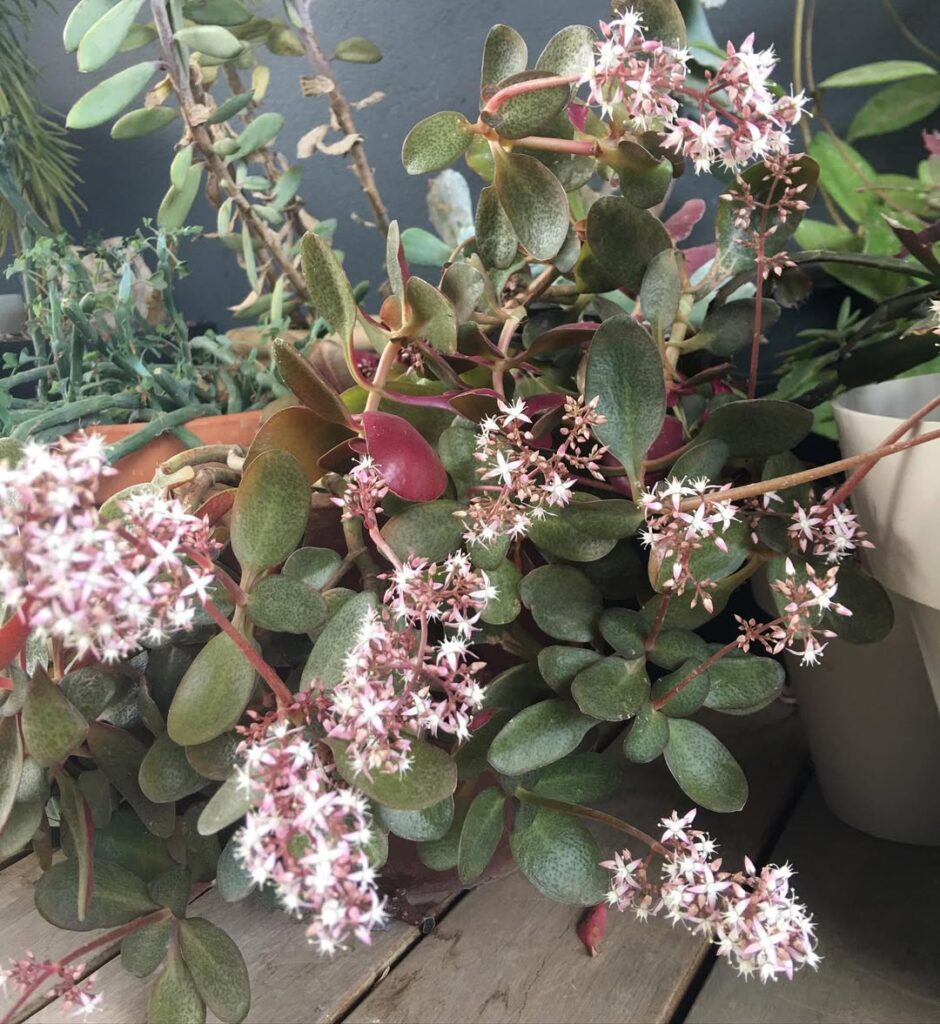
A fast-growing jade, it has tiny, rounded leaves and delicate white flowers that bloom under the right conditions. It adds a soft, whimsical touch to indoor gardens.
Crassula falcata (Propeller Plant)
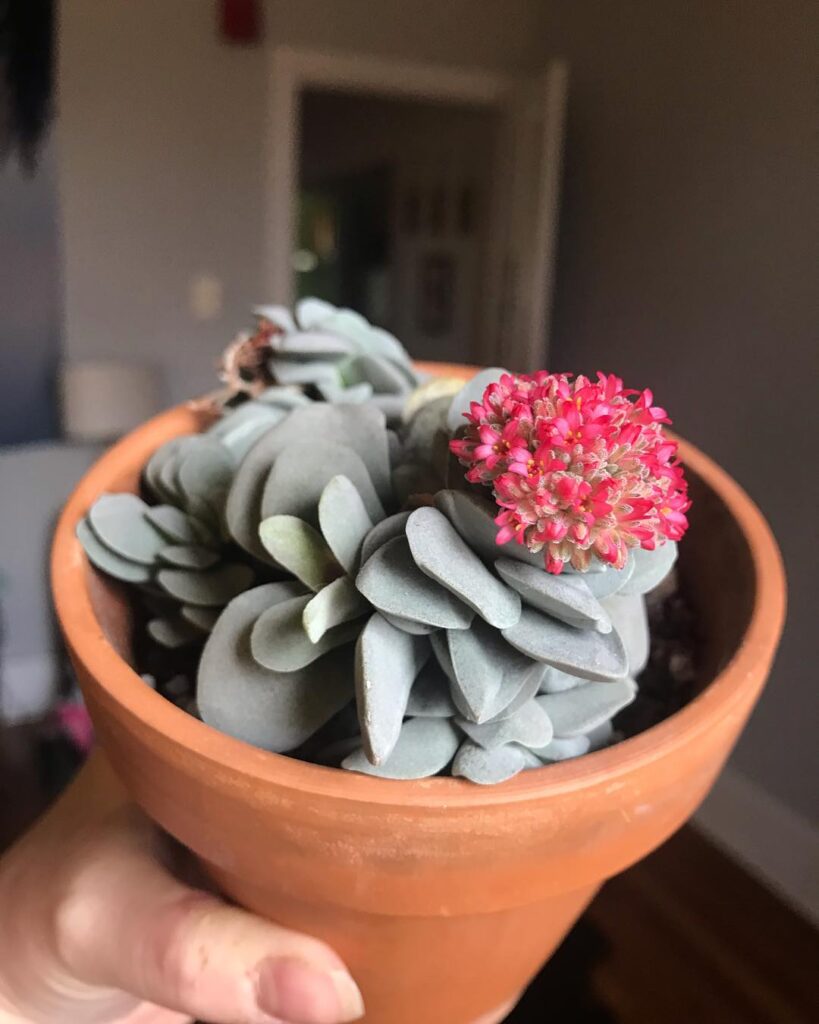
This jade plant has flat, overlapping leaves shaped like propeller blades. Its unique form makes it an interesting addition to succulent collections.
Crassula ovata ‘Skinny Fingers’
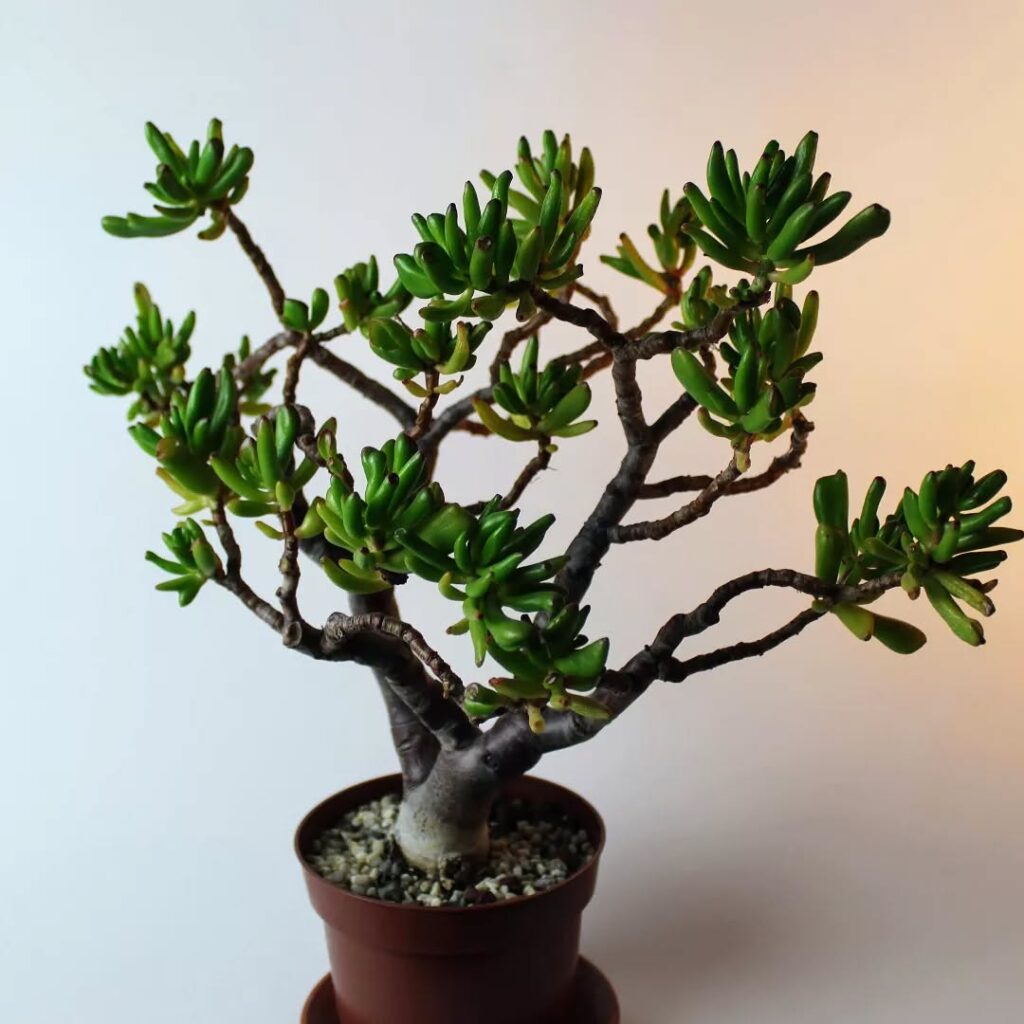
A rare variety with long, slender leaves, offering a modern look. Its deep green color and unusual leaf shape make it stand out among other jade plants.
Crassula ovata ‘Red Coral’
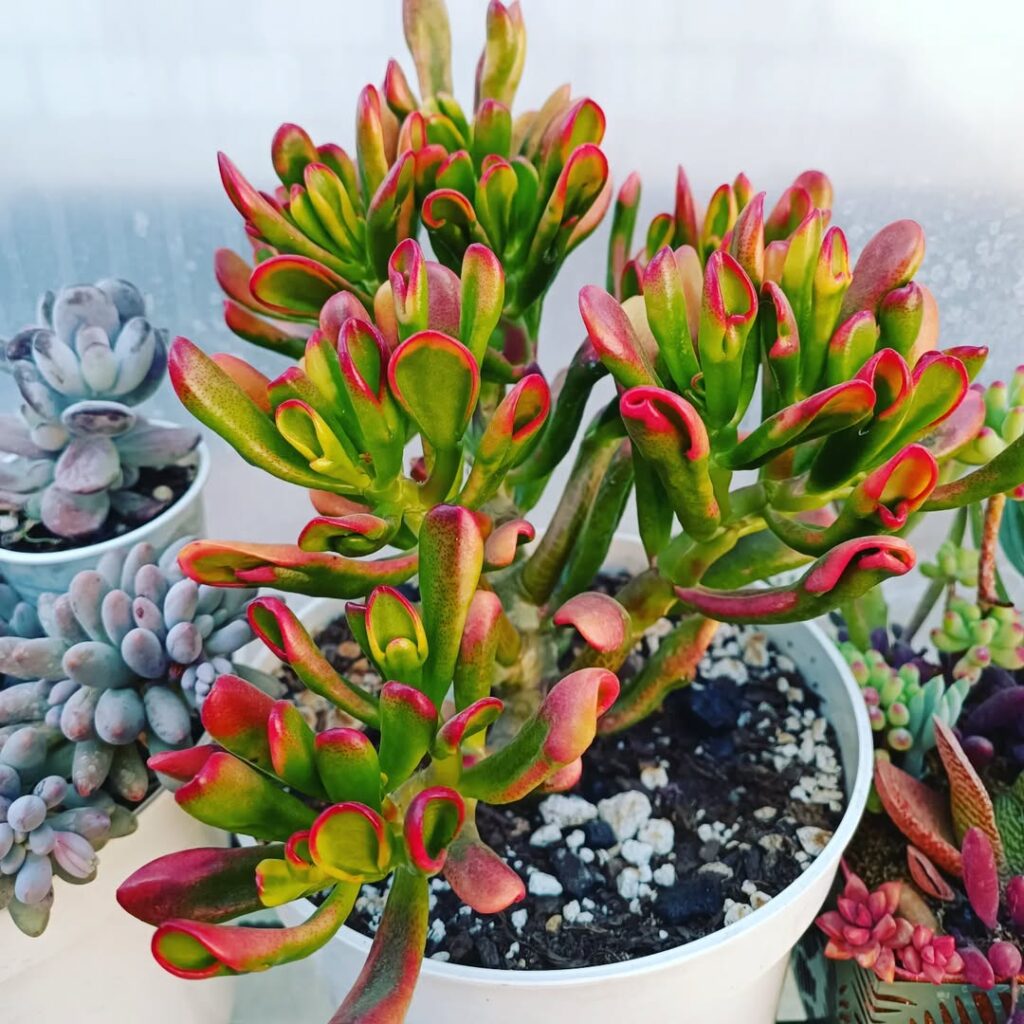
A deep red jade plant, it intensifies in color when given bright sunlight. Its leaves turn shades of red and burgundy, making it one of the most striking varieties.
How to Care for Indoor Jade Plants
Jade plants are some of the easiest houseplants to care for. They thrive with bright, indirect sunlight for at least six hours daily. Water only when the soil is completely dry, usually once every two to three weeks. Overwatering is the most common problem, so always let the soil dry out between watering. Use well-draining succulent soil, and terracotta pots help prevent excess moisture. Keep your jade plant in warm indoor temperatures, ideally between 15–24°C (59–75°F). Fertilize once a month during the spring and summer growing season, but avoid over-fertilizing.
Jade plants are beautiful, long-lived, and symbolic of good fortune. Whether you prefer compact, trailing, or colorful varieties, there’s a jade plant perfect for your indoor space.
